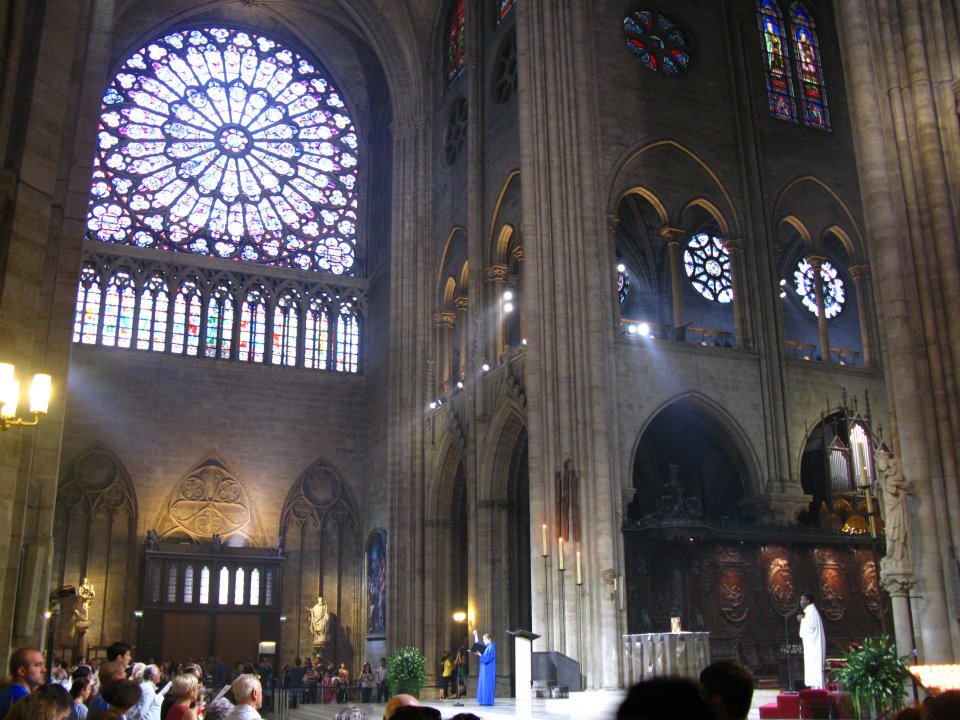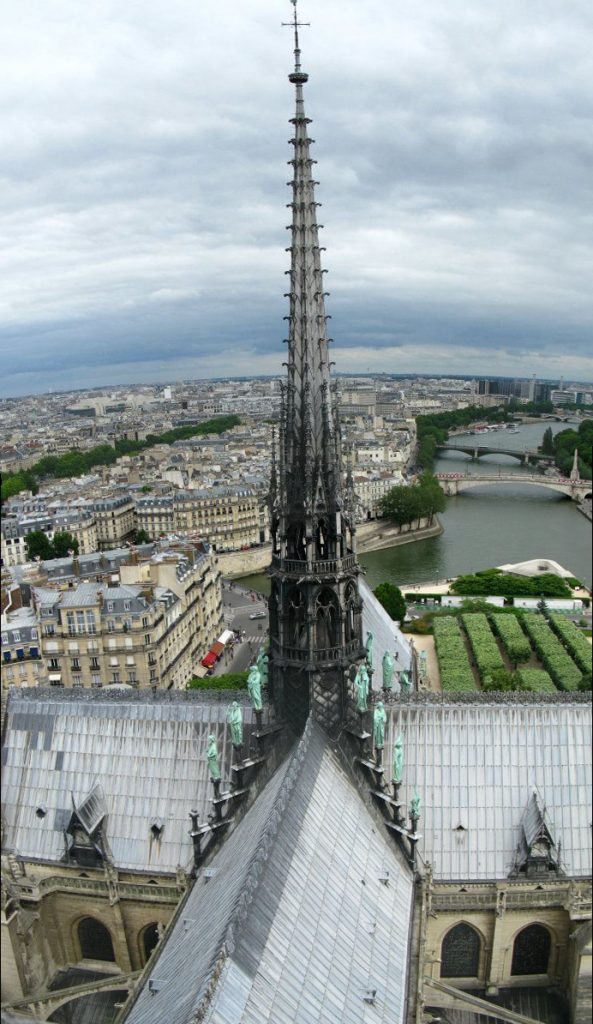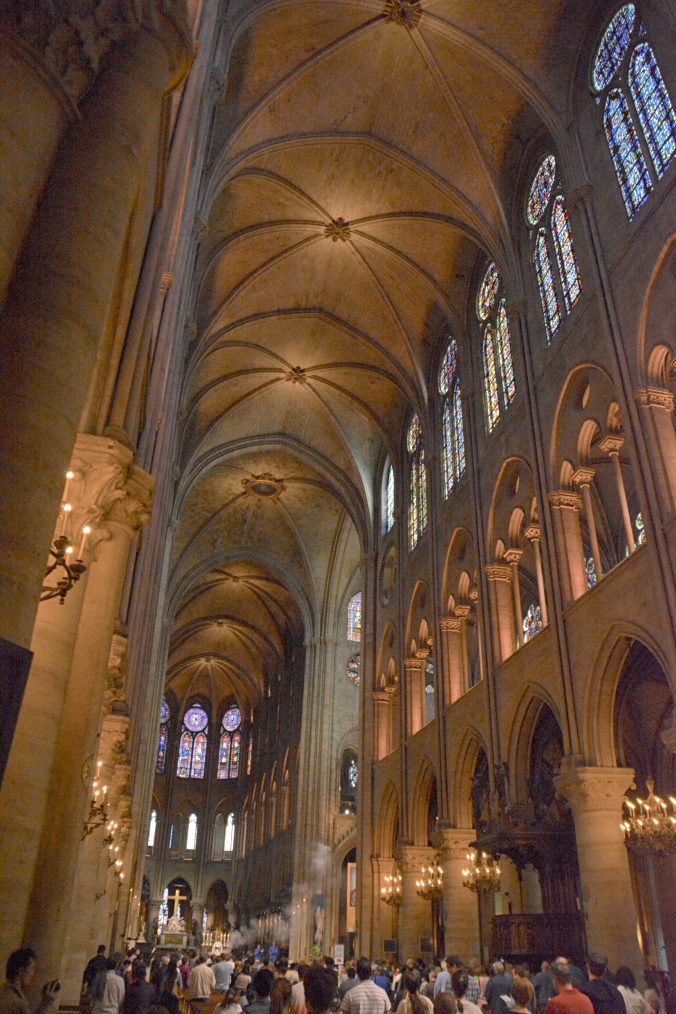Notre Dame de Paris burned last week. As I watched along with the rest of the world, helpless to stop the loss of centuries of history, there were moments when I had to fight back tears. It may seem strange for an atheist and scientist to feel the loss of a religious building so acutely, but I love cathedrals, and Notre Dame in particular holds a special place in my heart.
I love cathedrals because, in attempting to build structures invoking the glory of God, humans instead have demonstrated our own potential. Cathedrals show us that despite the cruelty and pettiness and meanness that we too often see in the world, we are also capable of breathtaking beauty when we work together toward a common goal. They demonstrate that we can do anything if we set our minds to it, even if it is the work of many generations. Cathedrals show us that physics and engineering can work hand in hand with artistry, and in fact can become art themselves. When I walk into a cathedral, I am in awe, not of God, but of humans. Imagine what we could do if we once again devoted our time and ingenuity and resources and hard work to a common goal. What could our modern cathedrals be?
Notre Dame de Paris is special to me. I first visited in the summer of 2001 on a whirlwind trip to Europe with a bunch of other high school kids as part of the People to People program. To give an idea of how little I had seen of the world up to that point, one of the highlights of the trip for me was seeing mountains with snow on top of them. I had spent my whole life in the midwest and the biggest mountains I had ever seen were the Appalachians.
Notre Dame was the first cathedral I had ever seen, and it took my breath away. The experience of entering from the hot, bustling noise of a summer day in Paris through the intricately carved doorway into the cool, quiet, interior, of looking up into that impossibly high vault, then down the length of the cathedral to the distant altar, of marveling at the stained glass windows, is one that left its mark on me. Of all the experiences from that trip, that first astounding view of Notre Dame became the touchstone for the whole trip for me. It encapsulates the wonder I felt at the sudden broadening of my horizons, the internalization of what had until then been just the abstract knowledge that the world is huge and fascinating and full of rich history beyond anything I had experienced.

I have had the privilege of returning to Paris twice on work trips, once in 2012 and again in 2015, and both times Notre Dame was one of the first places I visited. In 2012, I went to Notre Dame immediately after arriving and dropping my bags at my hotel. It was late afternoon when I got there and I inadvertently walked in on a service. There was a woman in a blue robe on the dais, illuminated by spotlights mounted high up on the walls, and her voice was impossibly beautiful in that impossibly beautiful building. On that same trip, I returned to the cathedral later with two colleagues from work, Ken Herkenhoff and Nathan Bridges. We waited in a short line and then climbed up the towers to the walkways that afford the classic views of Paris, with the chimeras in the foreground and the Eiffel tower behind. From that walkway you also get a stunning view of the roof and spire of the cathedral, all of which are now gone. Nathan is gone now too; he passed away unexpectedly two years ago. Whenever I see Notre Dame, I am reminded of him.
The fire at Notre Dame is shocking because we like to think of monumental buildings like cathedrals as eternal. Yes, we know intellectually that in the past they have burned and been renovated and rebuilt and expanded, but that was all in the past. We have a certain arrogance that now, in our modern era, disasters like that don’t happen anymore. There’s a feeling that we live in a post-historical world that is somehow special and different from all the time that came before, and that we will be able to preserve things as they are forever. Of course that’s nonsense. Anyone who is paying attention to what is happening in the world should be all too aware of how the world is changing.

Even without superstition, it is hard to not to see the symbolism of the fire. It reminds me of the poem Ozymandias, about the folly of believing that current glories can last forever. It is a reminder that even the most apparently permanent human creations can be lost at a moment’s notice, just as a human life can be suddenly lost, and that we should appreciate and cherish the beauty in our lives while we have it. The fire represents the loss of a beautiful and irreplaceable relic of a bygone era, but there is also an element of hope. More of the great old structure survived than many expected during the blaze, thanks to those who took swift action to limit the damage, many risking their own lives in the process. What looked like total destruction has turned into a chance to rebuild, honoring the long history of the structure but also a chance to put the mark of our current era on it, preserving a record of ourselves in the long history of the edifice.
There are lessons here to be learned.


Leave a Reply